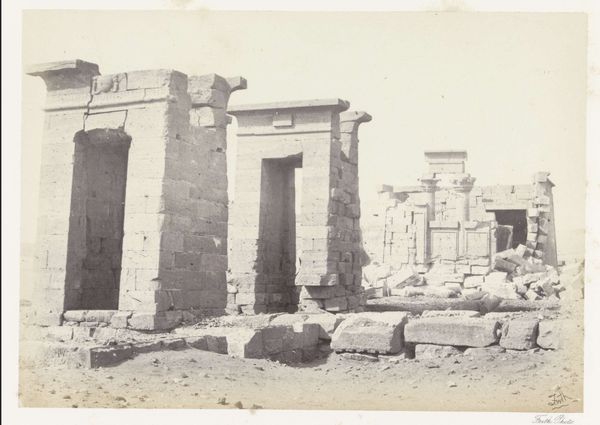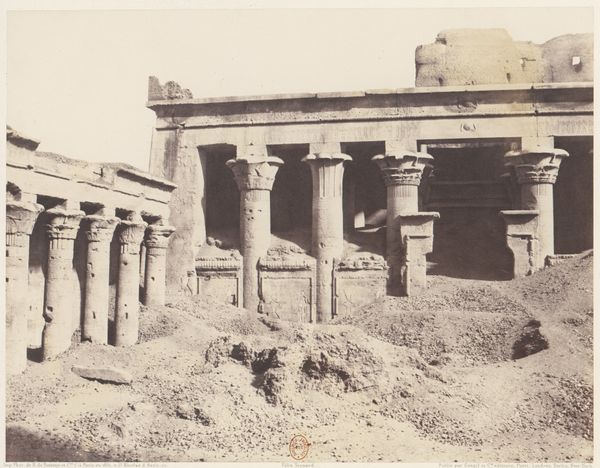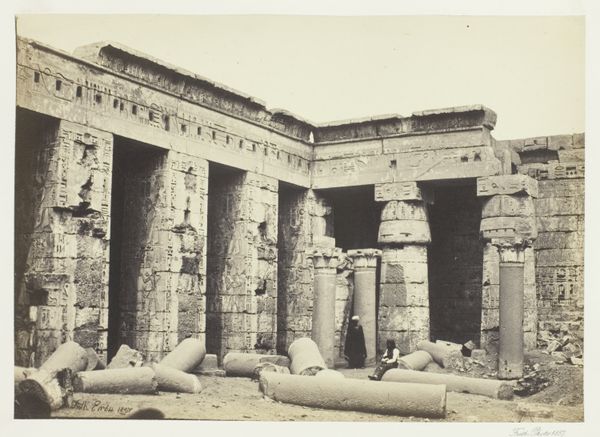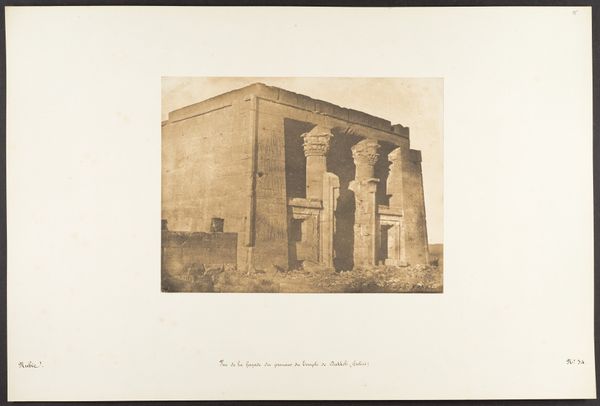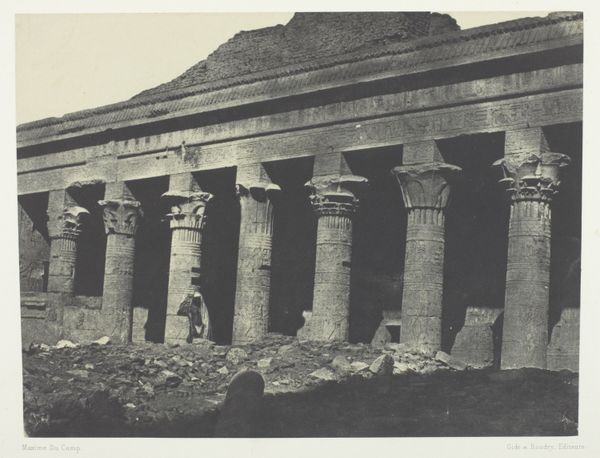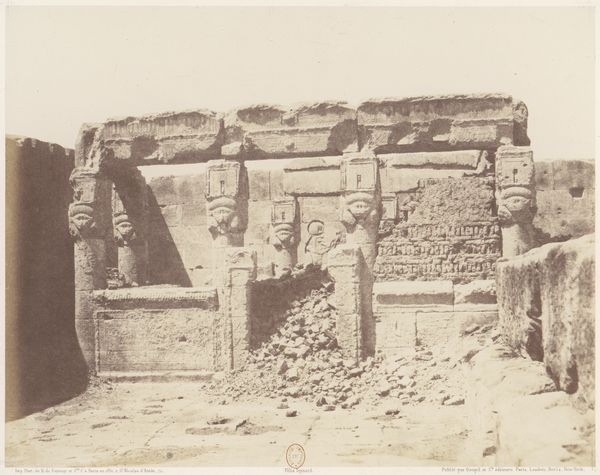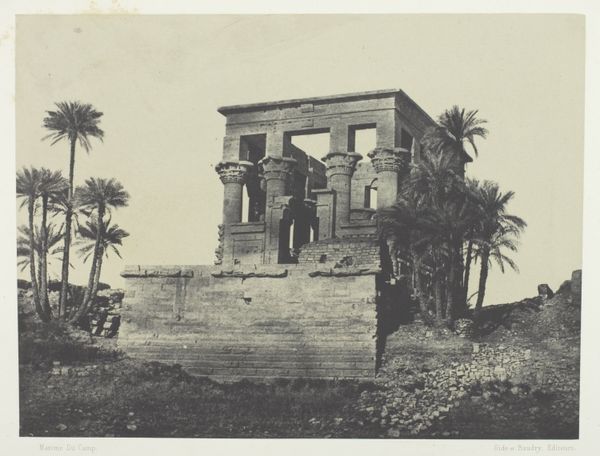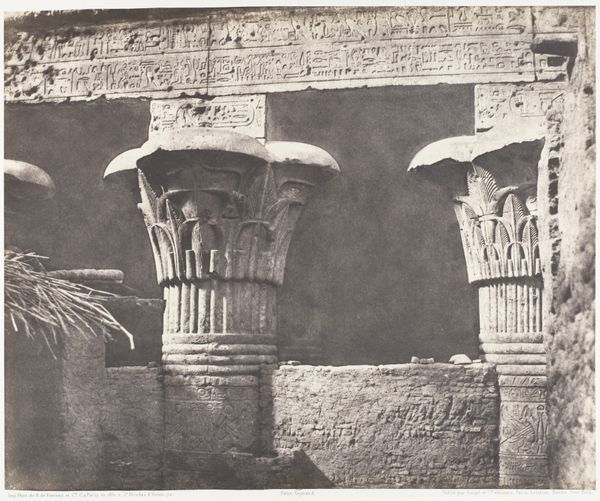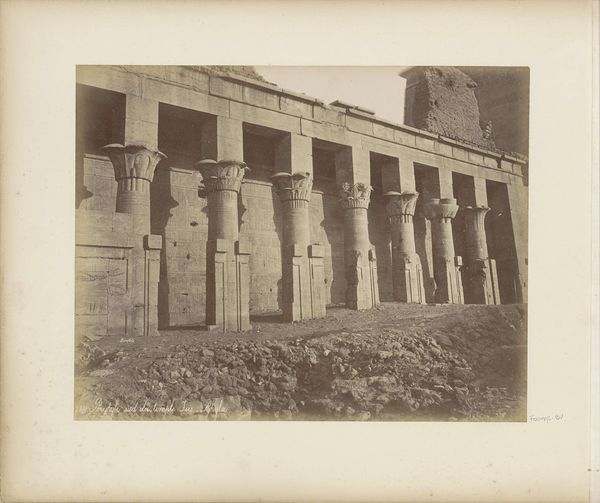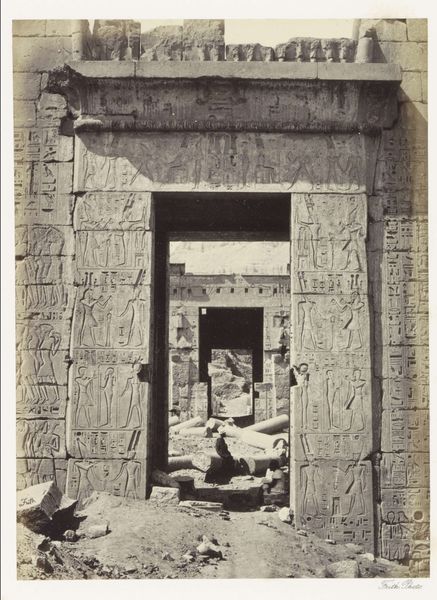
Ile de Fîleh (Philæ), Édifice de l'Est - Façade Occidentale - Vue du Point E 1851 - 1852
0:00
0:00
photography, architecture
#
landscape
#
ancient-egyptian-art
#
photography
#
ancient-mediterranean
#
arch
#
architecture
Dimensions: 25.1 x 30.5 cm. (9 7/8 x 12 in.)
Copyright: Public Domain
Editor: We're looking at Félix Teynard's "Ile de Fîleh (Philæ), Édifice de l'Est - Façade Occidentale - Vue du Point E" from around 1851. It’s a photograph, so seeing a picture of such an ancient place, well, it really highlights how long ago it was taken! The ruins, especially that arch, give the whole scene a powerful feeling of timelessness. What stands out to you about this image? Curator: This photograph presents an interesting case study of the 19th-century European fascination with Egypt and its ancient monuments. Teynard’s work isn't just a visual record; it actively participates in the construction of a certain narrative about Egypt – one that emphasizes its exoticism and antiquity for a European audience. Editor: That makes sense. So, beyond just showing us the ruins, it’s also shaping how people *see* them? Curator: Precisely! The choice of subject, the framing, and even the photographic process itself are all part of a visual language that communicates power dynamics. Think about who this photograph was made for, who could afford to view it. It speaks to a colonial gaze that framed Egypt as a place of wonder, ripe for exploration and, perhaps subconsciously, for control. Editor: Hmm, like a form of visual tourism before mass tourism was really a thing? Curator: In a way, yes. Early photography played a key role in popularizing images of distant lands, and this popularization was deeply intertwined with colonial expansion. Teynard’s photograph contributes to a broader visual archive that both reflected and reinforced those power structures. This wasn’t just art, it was cultural and political messaging in nascent form. Editor: I never thought about it that way. I was stuck on the aesthetic, the beautiful composition, but the context really adds another layer. Thanks for broadening my perspective. Curator: It’s essential to consider that what appears straightforward is very carefully manufactured and consumed.
Comments
No comments
Be the first to comment and join the conversation on the ultimate creative platform.

